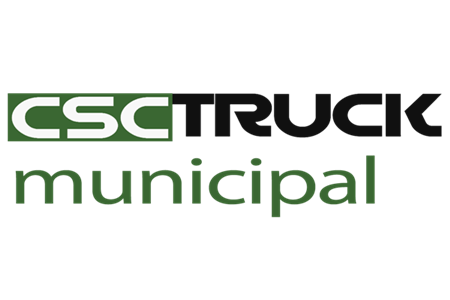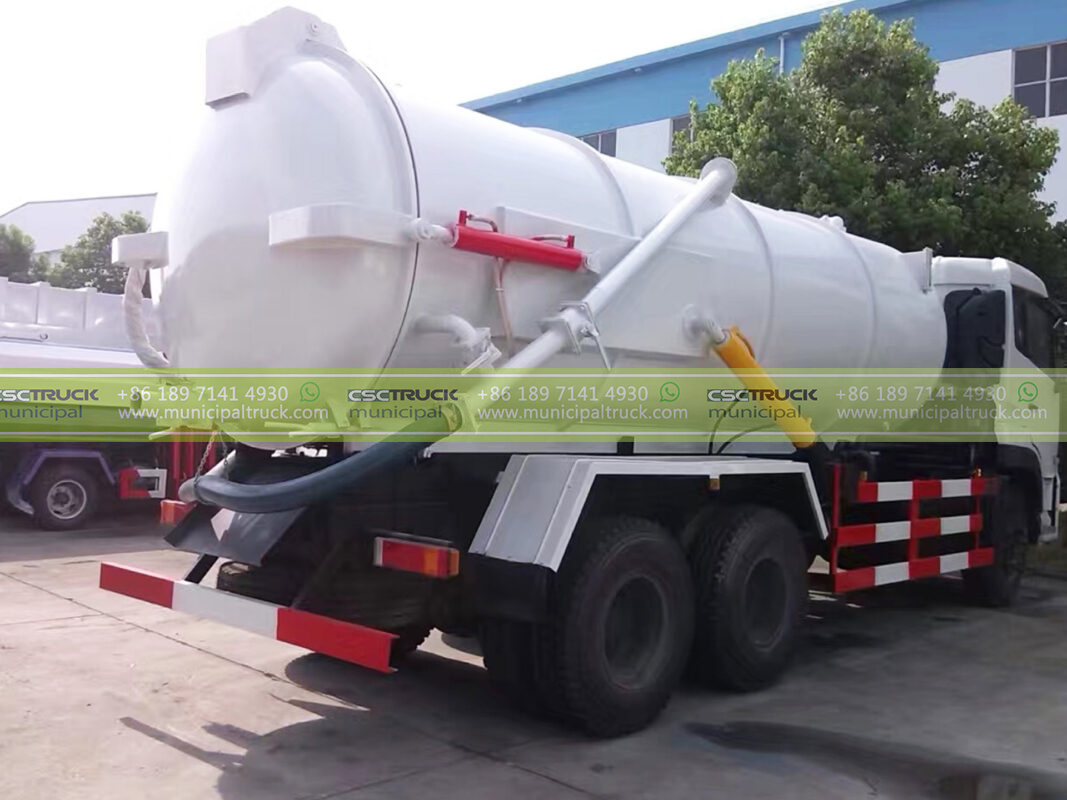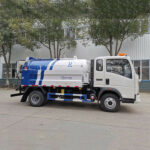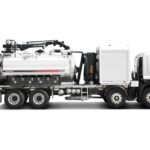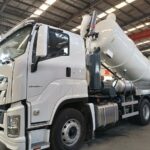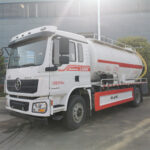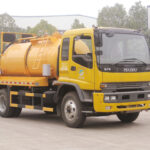In the complex ecosystem of municipal sanitation, vacuum sewer trucks serve as the circulatory system’s white blood cells—identifying, extracting, and eliminating blockages that threaten urban health. These specialized vehicles combine industrial-strength suction with precision cleaning tools to maintain the miles of underground pipes that conventional garbage trucks and sweeper trucks never touch. But not all vacuum trucks perform equally. The difference between a superficial clean and a truly restored sewer line lies in six critical design and operational features that define high-performance units.
1. Industrial-Grade Vacuum Systems: The Heart of Operations
The defining feature separating adequate from exceptional vacuum sewer trucks lies in their suction technology. High-efficiency systems require:
- Dual or triple-stage centrifugal pumps generating 10-14 inches of mercury vacuum pressure, capable of lifting:
- Wet sludge at 1,800+ gallons per minute
- Solid debris up to 6 inches in diameter
- Semi-set concrete-like fatberg chunks
- Cyclonic separation chambers that:
- Remove 97% of liquids before reaching storage tanks
- Automatically eject rocks and non-organic solids
- Prevent pump cavitation from slurry mixtures
The key metric: A premium system should empty a 300-gallon catch basin in under 90 seconds while leaving less than 1/8″ residue—a standard most municipal contracts now mandate.
2. Advanced Nozzle and Jeng Systems for Pipe Restoration
Modern vacuum sewer trucks have evolved beyond simple suction into comprehensive pipe rehabilitation platforms through:
Multi-Function Jetting Reels
-
Rotating drum assemblies storing 500-1,200 feet of high-pressure hose
- Variable spray nozzles adjusting between:
- 0° cutting jets (3,500 PSI for root removal)
- 40° flushing patterns (800 PSI for silt clearance)
- Oscillating 360° heads for complete wall scouring
Real-Time Cleaning Verification
- Forward-looking sonar nozzles mapping pipe interiors pre/post cleaning
- Load sensors detecting density changes in extracted material to identify remaining deposits
- GPS-linked documentation creating cleaned pipe condition reports
This transforms vacuum trucks from simple extractors into diagnostic tools that prove cleaning efficacy—a requirement for modern infrastructure maintenance grants.
3. Intelligent Debris Management and Storage
Effective material handling separates professional-grade vacuum sewer trucks from basic models through:
Compartmentalized Tanks
- 3-5 segregated chambers for:
- Liquids (later pumped to treatment plants)
- Grit/sand (for landfill disposal)
- Hazardous materials (with sealed quick-dump valves)
Self-Cleaning Mechanisms
- Automatic tank rinsing systems preventing material buildup between jobs
- Vibrating screen filters that continuously separate solids during operation
- Pneumatic ejectors enabling 30-second debris offloading
Operational impact: Premium systems process 25-40% more material between disposal trips than standard units—critical for large-scale sewer rehabilitation projects.
4. Operator-Centric Control Systems
The difference between rushed and thorough cleaning often lies in the truck’s interface design:
Centralized Automation Panels
- One-touch presets for common tasks (catch basin cleaning vs. pipe jetting)
- Load-sensitive RPM control maintaining optimal vacuum despite material changes
- Safety interlocks preventing overpressurization or tank overfills
Ergonomic Workspaces
- Vibration-dampened platforms for hose handling
- 360° camera arrays eliminating blind spots during urban operations
- Climate-controlled cabs with HEPA filtration for hazardous environments
These features reduce operator fatigue during 10-12 hour shifts while improving cleaning consistency—a major factor in long-term pipe preservation.
5. Specialized Configurations for Unique Challenges
Leading manufacturers now offer application-specific vacuum sewer truck variants:
Combined Sewer Overflow (CSO) Units
- 20,000-gallon liquid capacity for floodwater pumping
- Debris grinders preventing pump clogs during storm events
- High-flow bypass valves for emergency discharge
Grease/Hazardous Waste Models
- Explosion-proof electrical systems
- Steam heating jackets maintaining viscous material flow
- Grounding systems for flammable vapor safety
Trenchless Repair Carriers
- CIPP liner spray systems for pipe rehabilitation
- UV-cure resin injectors
- Robotic camera deployment ports
This specialization allows single trucks to replace multiple pieces of equipment—a cost-saving approach gaining traction among municipal operators.
6. Fleet Synergies and Smart City Integration
The most effective vacuum sewer trucks now function as networked components within broader sanitation systems:
Preventive Maintenance Coordination
- Shared GIS data with sweeper truck routes to identify sediment sources
- Predictive scheduling based on garbage truck reported overflow incidents
Automated Reporting
- Cloud-connected sensors documenting:
- Pipe condition scores
- Extracted material volumes
- Maintenance requirements
Alternative Power Integration
- Hybrid hydraulic systems recovering energy during braking
- Plug-in electric models for noise-sensitive urban night operations
This interconnected approach—where vacuum sewer trucks, garbage trucks, and sweeper trucks share operational intelligence—represents the future of sustainable urban sanitation management. By combining industrial cleaning power with smart technology integration, modern vacuum trucks do more than react to problems; they actively prevent systemic failures through data-driven maintenance.
